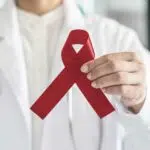National PTSD Awareness Month is observed in June and it ushers in an array of awareness campaigns run for the benefit of PTSD survivors. PTSD, which stands for post-traumatic stress disorder, occurs in people after they have experienced a particularly traumatic event like war, violent physical/sexual/verbal assault, accidents, and so forth. Symptoms include depression, anxiety, nightmares, paranoia, insomnia, disturbing thoughts, and much more. Many people recover from PTSD after a few days, weeks, or months. Yet, for others, the recovery road might mean one year or more. This mental disorder is highly treatable, but due to the lack of knowledge around it as well as the stigma attached to seeking mental help, many choose to ignore the problem and suffer through it.
History of National PTSD Awareness Month
In 2010, the U.S. Senate declared June 27 to be National PTSD Awareness Day. However, in 2014, it designated the whole month of June to be observed as National PTSD Awareness Month. This was a welcome move by many PTSD organizations and support groups as many felt that more awareness campaigns needed to be held for people to seek help when it came to PTSD. The U.S. Department of Veterans Affairs, one of the most active forerunners in the fight against PTSD, has released a special June calendar that people can download. This special calendar features several activities (like raising awareness on social media through sharing PTSD helplines, articles, subscribing to YouTube channels, finding local PTSD therapists, etc.) aimed to increase awareness and support for PTSD survivors.
PTSD is not a newly recognized mental disorder. The disorder dates back to 50 B.C. when it was described in a poem by Hippocrates. He talks about the experiences of a soldier returning home after a battle. PTSD started gaining more attention after the wars between England and France when many people, civilians and soldiers alike, reported experiencing symptoms like anxiety, insomnia, intrusive and disturbing thoughts, and flashbacks. This continued throughout WW1 and WW2, with PTSD being named as ‘Shell Shock’ and ‘Battle Fatigue’, respectively. It was during the 1970s’ Vietnam War that the mental disorder was renamed PTSD. Earlier treatments related to electric shock therapy and other painful options. But today’s modern technology and extensive research have led to much better and effective treatments like group therapy, counseling, and antidepressants.
National PTSD Awareness Month timeline
Hippocrates’ poem, narrating a soldier’s symptoms after a war, becomes the earliest recorded instance of PTSD in history.
PTSD is named ‘Shell Shock’ and ‘Battle Fatigue’ in WW1 and WW2, respectively.
The U.S. military veterans describe their trauma and its symptoms after the Vietnam War, resulting in the mental disorder being named ‘post-traumatic stress disorder.’
The U.S. Senate designates June as the official month for PTSD Awareness.
National PTSD Awareness Month FAQs
What is National PTSD Awareness Month?
June is National PTSD Awareness Month. Its goal is to raise awareness about said mental illness for people to recover from it by seeking better treatments.
What color ribbon is used for PTSD?
PTSD is symbolized by the color teal.
How do you spread awareness about PTSD?
You can spread awareness about PTSD by making/sharing social media posts related to it, participating in/organizing PTSD-centered events, designing posters and hashtags, and sharing resources and helplines for PTSD survivors.
How To Observe National PTSD Awareness Month
Stand with PTSD survivors
PTSD survivors need care, attention, and love. Research shows that people recover faster from illness if they have supporters in the shape of friends and/or family. Be there for them by being informed about their specific symptoms, directing them to professional help, or just lending them an ear.
Learn about PTSD
Research about PTSD’s causes, symptoms, and treatments. You will be better equipped in helping people in the future or even yourself.
Talk about PTSD
The main aim of National PTSD Awareness Month is to spread awareness about it. Talk to your friends and family, go to events related to it, and donate to PTSD organizations if you can afford to. But whatever you choose to do, don’t stop spreading information about the disorder.
5 Facts About Trauma That Will Blow Your Mind
8% of the population will experience PTSD
The National Center for PTSD states that around 7–8% of the population will experience PTSD in their lifetimes.
Women are more likely PTSD sufferers
Women are twice more likely to suffer from PTSD than men due to a sexual assault/trauma event.
‘Big T’ and ‘Small t’ types of trauma
There are two types of trauma and they range in the severity of the causes and triggers: the ‘Big T’ is any type of trauma that has occurred due to a life-threatening situation like wars, natural disasters, physical assault, etc., while the ‘Small t’ is caused due to a disturbing event that is not life-threatening like divorce, abrupt relocation, financial woes, etc.
Trembles are normal after trauma
Experts state that it is completely normal and healthy to experience shivers and trembling after a traumatic, stressful event as it is the body’s way to release all of the excess adrenaline.
PTSD is not just from personal experience
Many people can develop PTSD simply because they heard or witnessed someone else going through a traumatic event.
Why We Love National PTSD Awareness Month
It’s a reminder of human strength
The human mind and body work in complex ways to keep us alive and going. This month, we are reminded not only of the human mind’s immense strength but also some of its limitations. It is a reminder that we are not machines and that it is completely normal to feel the emotions that we do. And unlike machines, we have the strength to get better on our own by helping each other.
It’s a reminder of this mental disorder and more
The more talk there is about PTSD, the more people will become aware of it, and the more people will seek treatment for it. This domino effect will also help shed light on other types of mental disorders that people suffer from after a traumatic event.
It’s a reminder of the road to recovery
The road to recovery may look different from one person to another, but it is always there. The month raises awareness about better treatment options. It also talks about the different trigger points and what people can do to reduce or avoid them.
National PTSD Awareness Month dates
| Year | Date | Day |
|---|---|---|
| 2026 | June 1 | Monday |
| 2027 | June 1 | Tuesday |
| 2028 | June 1 | Thursday |
| 2029 | June 1 | Friday |
| 2030 | June 1 | Saturday |



















































































































